I am a hard-core iPhone data user. My AT&T account shows that I have downloaded 5.4 GB and uploaded 1.1 GB worth of data since I received my first iPhone. I suck through batteries like there is no tomorrow, so much so that I actually had to return my first iPhone because the battery just wasn’t holding a charge because I had depleted it so frequently. This has always been an issue with me (I once purchased a fat extended battery for my HTC Wizard that looked incredibly ugly but helped my power addiction).
Even with my new 1st generation replaced iPhone, I found myself having to charge up my phone multiple times a day and I purchased a external battery charger (a PowerTraveler PowerMonkey Classic) so that I wouldn’t get caught without power. So, I was pleased to hear that the new iPhone 3GS had a longer battery life. But would it be enough for my multiple email accounts, leaving Location Services, Push Notifications and 3G on all the time as well as stand up to heavy twittering, music/podcast listening and lots of Safari time? Honestly, I didn’t want to take the chance.
So I decided to see if I could get a review done of what I believe to be one of the best extended batteries available for the iPhone in the current marketplace: the Mophie Juice Pack Air. The Juice Pack Air not only is an external battery, it is also elegantly wrapped within an iPhone 3G/3GS case which will protect your iPhone well.
Product Description:
The Mophie Juice Pack Air is extremely well designed and thought out. The fact that it melds a battery with a protective case allows you to kill two birds with one stone. The battery itself is a 1200 mAh external battery wrapped in a shiny acrylic shell that fully encapsulates an iPhone 3G or 3GS (the form factor is the same for both of these iPhones). Alone, the Juice Pack Air weights 2.66 oz and has dimensions of 4.90 in x 2.59 in x 0.75 in. When the iPhone is installed, the actual size is just slightly larger than a traditional protective carrying case.
I found that the actual size and weight worked to my advantage simply because the entire device felt a bit more solid and my larger hands could grasp it better. It particularly helped me when typing in landscape mode as there was more to grab. The Juice Pack Air comes in three colors: Black, White and Purple.
Installation is literally a “snap”. The case comes in 2 pieces, a top (which is simply plastic) and the bottom which includes the battery. The bottom section has a variety of other components to it. There is a iPhone connector inside the case, a battery level indicator, an on/off switch and a micro-USB connector. Installing your iPhone into the Juice Pack Air is quite easy but you have to do it carefully. You simply push your iPhone down into the bottom section and make sure that the connector fully locks into your iPhone. It’s very snug. I was a bit worried that I was going to do some damage when installing but it went quite well. Once you have the bottom connected to your iPhone, simply slide the top part down to fully enclose your iPhone.
If you ever want to remove your iPhone, the process is a bit more tricky but still doable. Here are some tips. Start with the section that has the volume control space and carefully pull it so that there is a 1/4 inch space between the top and bottom sections. Then wiggle the top part (starting with the side that does not have the volume control) so that you have equal spacing gaps. It seems like it could be very easy to break the plastic if you are not careful. Once you get the top part off (and it will slide off), you need to carefully detach the iPhone from the bottom. I found this to be a bit more difficult until I figured out this trick. Towards the bottom of the font, there are two curved sections that allow for the microphone and speaker to work for the iPhone. If you use this area, you can slowly detach the iPhone. The easiest way that I found to do this is to hold your iPhone upside down and put your thumbs into those two slots and start pushing down slowly. After applying some force, the iPhone should slowly loosen and you should be able to slide it out. It takes a bit of effort but it will come out. I’m sure that if you do it enough, it will start to loosen up a bit more.
The package comes with the top and bottom case, an instruction booklet and a micro-USB cable that is used for charging and syncing your iPhone.
The guys and gals at Mophie really thought out the usability of this case/battery pack from a connectivity standpoint. How many times have you needed to charge or sync your iPhone only to find that you didn’t have the proprietary iPhone cable? Since they adopted a micro USB cable, your chances of finding that type of cable are much higher than finding an iPhone one. Many Bluetooth headsets come with a micro USB cable, and some even have car adapters for them. Do note that I don’t know about the power specifications for the car or wall chargers so you are probably safer just using your PC or Mac to connect via a regular cable. If you iPhone battery icon starts blinking and you don’t see the battery with the charge lightening bolt in the middle, disconnect whatever power cord/supply you are using as it might harm your iPhone or Mophie. Syncing is also accomplished using the micro-USB cable.
The Positives:
Here is a list of things that I particularly like:
-
Double your battery – the chart below shows the iPhone 3G and 3GS as well as the expected gains using the Juice Pack Air:
iPhone 3GS iPhone 3G Mophie (3GS) Mophie
(3G)Combo (3GS) Combo
(3G)Standby Time 300 hrs 300 270 270 570 570 Talk Time (2G) 12 hrs 10 10 9 22 19 Talk Time (3G) 5 hrs 5 4.5 4.5 9.5 9.5 Internet (3G) 5 hrs 5 4.5 4.5 9.5 9.5 Internet (Wifi) 9 hrs 6 8 5.4 17 11.4 Video 10 hrs 7 9 6 19 13 Audio 30 hrs 24 27 20 57 44 Battery type 1219 mAh 1150 mAh 1200 mAh 1200 mAh Apple Battery Source – http://www.apple.com/batteries/iphone.html
-
2 ways to use – there are two ways that you can use the Juice Pack Air. First, you can slide the power switch to ON which will keep your iPhone fully charged at all times. The other way to use is to keep the power switch in the OFF position which means that you will deplete the iPhone’s battery first. Then when you want to charge it, just turn the switch to ON and your iPhone will charge. Supposedly this second method will actually get you a longer total combined battery life since doing a “trickle charge” actually uses more power in the long run.

-
Comes fully charged – a nice added touch is the fact that the Juice Pack Air comes fully charged so that you can get up and running right away. The packaging has an area where you can test the battery level without opening the package. This same battery indicator can be used to check your battery level at any time.

- Built-in protection – there is some intelligence built into the Juice Pack Air that prevents overcharge, short circuits as well as temperature protection. This latter item is particularly important since there have been claims that the new iPhone 3GS tends to run at a higher temperature, particularly when playing games or watching videos. Also, since the Mophie battery is practically on top of the iPhone battery, there is naturally a hot spot where the two are potentially touching. Both the Mophie and the iPhone have temperature warnings, your iPhone “should” be protected against overheating.
- 1st Apple Certified External Battery – according to the Mophie website, the Juice Pack is the first external battery that has been fully certified by Apple.
-
Fully Accessible Controls – All of the controls and inputs are fully accessible when the Juice Pack Air is in place, with one exception (obviously), the dock connector is “replaced” with the micro-USB connector but the functionality is there in full. Also, as noted previously, there are slight dimples in the case where the speaker and microphone are. There is no noticeable muting or muffling of sound in that area.

- Nice iPhone interface for website – Mophie added a nice touch by making their entire website iPhone-friendly.
The Negatives:
For the most part, the positives far outweigh the negatives. However, it is important to note items that I encountered over my week-long usage.
- Slight Reduction in Signal Strength – While the Mophie site clearly states that there is no signal degradation when the case is in place, in my testing, I did find that there were times (in fringe areas) where signal strength was a bit lower than with the Mophie case off. For example, I noticed only 3 bar strength where I previously had received 5 bars. To test, I removed the case and within seconds, my signal strength jumped to 5 full bars. Note, while there is no dimensional change between the 3G and 3GS, I’m wondering if the 3GS has some changed antenna positioning that could cause this. Mophie claims to have tested this on the 3G and says that the 3GS is fully compatible.
- “Throw away†your old stuff – If you have any peripherals that use the dock connector (e.g., FM transmitter devices for the car, speaker docking solutions, etc.) your quick and easy connections just got a bit more complicated. While it is fairly easy to pop off the case, it is a bit of a pain. Seriously though, don’t throw away any of your old dock-connector devices. This is just something to consider. The thing is, most of these peripherals charge your iPhone anyway, so there is no real need to have the Mophie in place when using peripherals.
- Strength of the case – I have not tested the fall-survivability of the Mophie case (I honestly hope that I never have to). But the important thing of a case is to protect the investment inside. The fact that the case doubles as a battery just is a nice value-add. I fear that the Mophie might not survive a fall very well as the shiny, smooth acrylic plastic looks like it might shatter or at least show some serious scratches if dropped.
- No screensaver when listening to iTunes – if you have your Juice Pack Air on and you are in the iPod app listening to music, your iPhone will not turn on the screensaver. While the display will dim, it will never go completely dark, which means that you are drawing a bit more power than you have to. There is an easy resolution to fix this, just hit the lock button (power) on the top of your iPhone.
Summing it up:
After using my iPhone-juiced Mophie for about a week now, I love the fact that I’m not tethered to a power cord as much. Despite a slight added weight and a few centimeters on the dimensions, the Mophie Juice Pack Air remains a “powerful” companion to my iPhone (groan, sorry about that one).
Note: I need to be fair to my readers and be transparent. I did receive this product for free. However, my reviews are and will always remain as un-biased as possible.
A thought that I had though for the Mophie folks. They should develop an iPhone app that gives details on both iPhone battery and Mophie battery. You could have the application show battery percentages for both batteries (iPhone and Mophie), time remaining to full charge or battery depletion (for both batteries), estimated battery life based on usage and a salesy “with your Mophie, your total battery charge remaining is XXX hours:minutes” and for those who don’t have a Mophie, you could say “if you had a Mophie you would have xxx hours:minutes of charge left but you don’t so you only have hh:mm left“. The application would be free of charge to any user, and would simply have additional information for when a Mophie is detected or not. You could also have a direct link to the product site within the app (among other things).
Regardless, I now can’t envision going anywhere without having a fully juiced Mophie attached to my iPhone. The added comfort of knowing that I don’t have to search for a power supply after just a few hours makes me feel much better. And travelers or road warriors should definitely look to get one of these. Despite the mentioned negative items, it still is a solid performer. The MSRP on the Mophie Juice Pack Air is $79.95 and you can currently get on Amazon for the same price of $79.95 (but potentially without sales tax and you do qualify for free shipping).
HTD says: The Mophie Juice Pack Air is a must have accessory for anyone with an iPhone. It gives you a full day’s worth of work time, without the need of recharging.
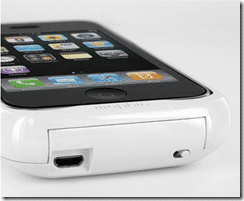
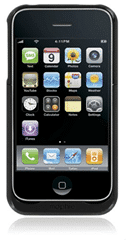
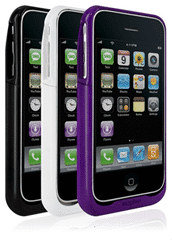
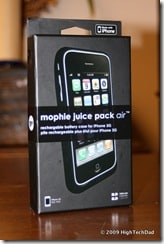
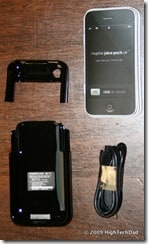
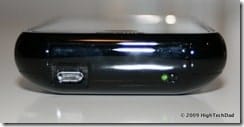
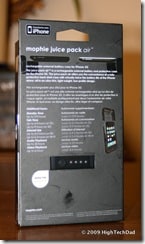
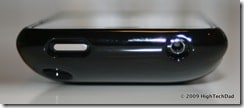


3 comments
Batterie externe iPhone
Don’t leave your power-tool chargers switched on once the tool or battery is charged. Even if you remove the tool or battery, the charger will keep charging …
Bill Lapcevic
Hey,
Following your recommendation, and because I have a few 6-12 hour flights coming up in the next few months, I went ahead and bought the juicepack. Here are a few additional thoughts.
1. The documentation that comes with the juicepack is easy to read, pithy, but not complete. For example, a few pictures of what the button on the back of the juicepack is used for, would be valuable (I still can't really tell what that is all about).
2. The juicepack seems to take a LONG time to charge via the USB connection to my first gen MacBook Pro 15 inch core 2 duo. So far it's taken over an hour and I have only 2 full lights (50% charged). I haven't yet tried plugging it into an outlet. I suspect that would be much faster.
3. I was a bit disappointed that I only seemed to get one “recharge” out of a fully charged JuicePack.
Still, the benefits of having almost double capacity for battery will really come into play on a trans-pacific flight.
Bill Lapcevic
Hey,
Following your recommendation, and because I have a few 6-12 hour flights coming up in the next few months, I went ahead and bought the juicepack. Here are a few additional thoughts.
1. The documentation that comes with the juicepack is easy to read, pithy, but not complete. For example, a few pictures of what the button on the back of the juicepack is used for, would be valuable (I still can't really tell what that is all about).
2. The juicepack seems to take a LONG time to charge via the USB connection to my first gen MacBook Pro 15 inch core 2 duo. So far it's taken over an hour and I have only 2 full lights (50% charged). I haven't yet tried plugging it into an outlet. I suspect that would be much faster.
3. I was a bit disappointed that I only seemed to get one “recharge” out of a fully charged JuicePack.
Still, the benefits of having almost double capacity for battery will really come into play on a trans-pacific flight.